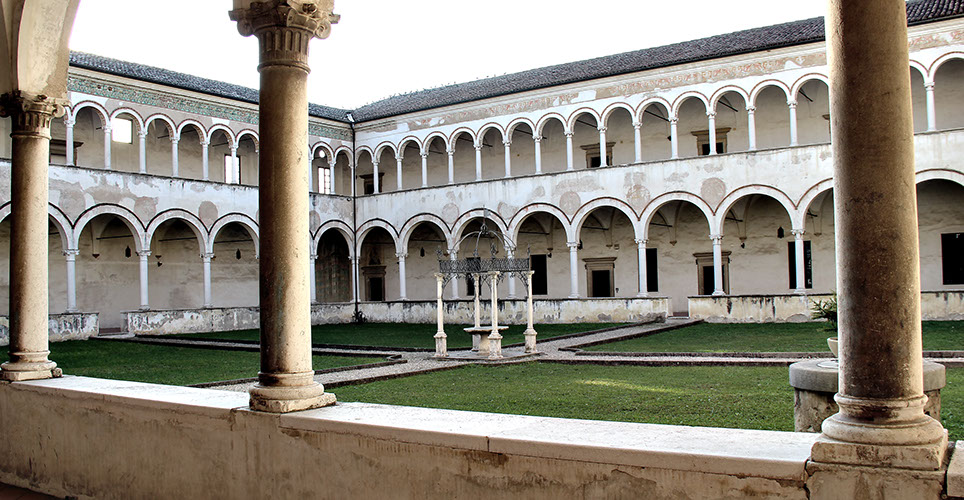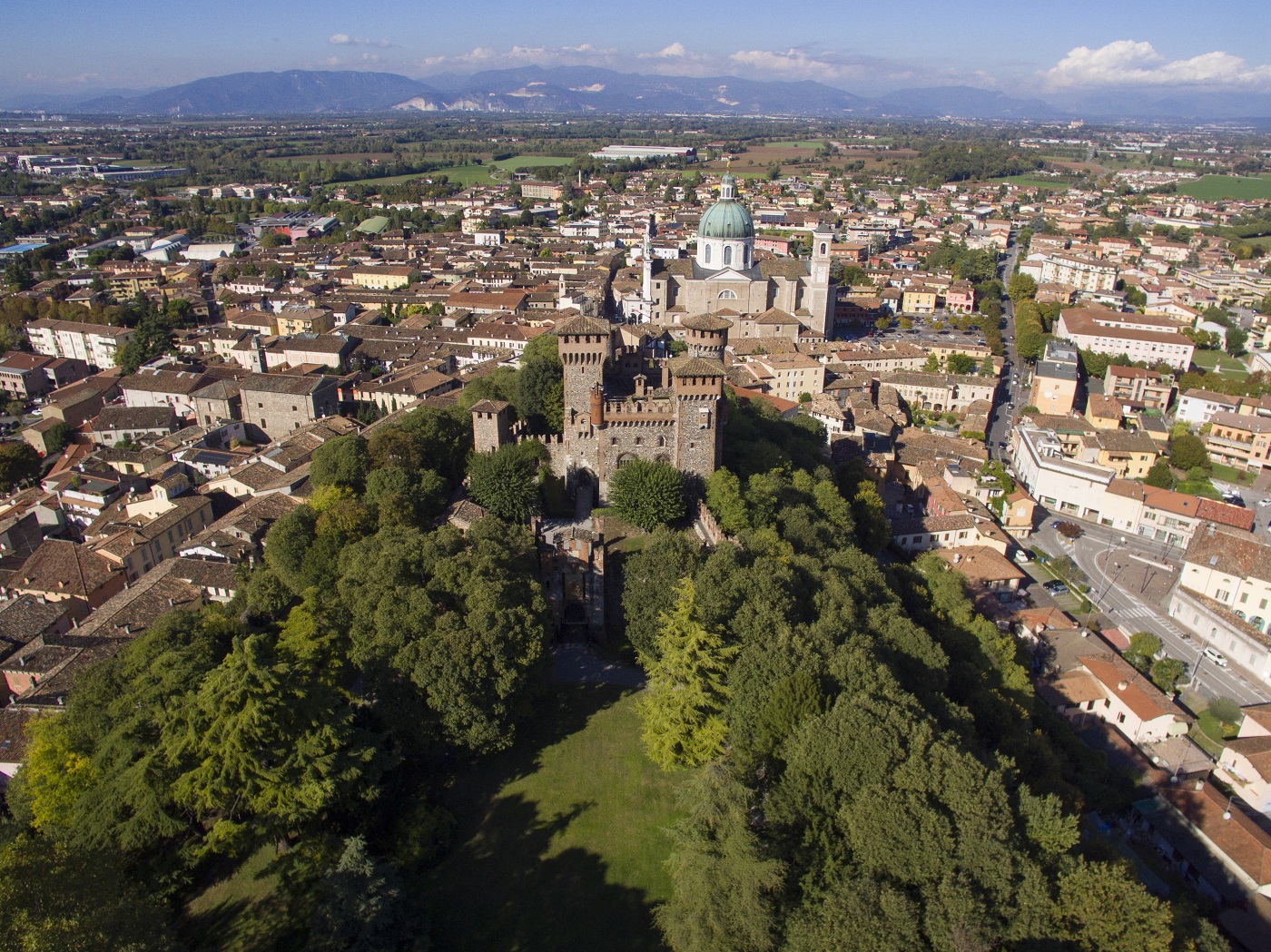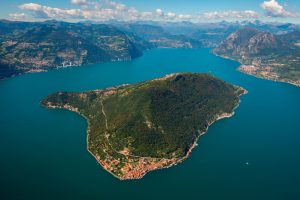

Cultural itineraries in the province of Brescia
Lettura: 5 minReading time: 5 mins
Appreciated by world tourism for its scenic and monumental beauty and the many opportunities for leisure and relaxation, Brescia is confirmed among the most visited Italian provinces, as well as the most attractive from an artistic and cultural point of view.
Let’s set off on a tour of the various areas: museums, churches, castles, works of art, archaeological parks, and unexpected gems just await to be discovered! Your cultural stay in the province of Brescia begins now!
1. Brescia: one city, infinite surprises
Brescia looking skywards, Brescia upside down, Brescia enclosed within the elegant walls of historical buildings.


Every corner of the city is a blossoming of history, art, and culture: from the Tosio Martinengo Art Gallery to the Santa Giulia Museum: from the three famous main squares to the churches: from the UNESCO World Heritage archaeological area and Teatro Grande, recognized as a national monument, to the Castle offering a privileged view from above: walking in historical Brixia means taking a fascinating a journey over three millennia.
Between one stop and another, you can relax with some shopping in the city streets and enjoy an authentic Pirlo, the quintessential Brescian aperitif.
Learn more: 12 things worth seeing in Brescia city.
2. Cultural sites in the Lake Garda area
Saying “Lake Garda” makes one’s mind immediately run to clear waters, fairytale views, enchanting beaches, and typical products of excellence.
This lake reminds of the sea and is dotted with cultural attractions where entertainment, history, archeology, and art blend together for a perfect stay – no matter your age!


Some must-see sites are the Grottos of Catullus and the Scaligeri Castle in Sirmione, the Castle of Lonato, the museums Martes in Calvagese and MuSa in Salò. And then Gardone Riviera with its Vittoriale degli Italiani belonged to Gabriele d’Annunzio, the Paper Mill valley in Toscolano and… much more to discover little by little!
Learn more: 14 things worth doing at Lake Garda in springtime
3. Lake Iseo and Franciacorta between history and culture
Let’s go back over 150 years: can you imagine illustrious figures such as Carducci, Fogazzaro, Pascoli, and Zanardelli in the richly frescoed rooms of Palazzo Torri in Nigoline di Corte Franca?
Have you ever taken a close look at Hayez’s canvas kept at the Pieve di Sant’Andrea in Iseo?


Besides the frescoes in the Church of Santa Maria della Neve in Pisogne and the splendid crucifixion in the Church of the Annunciata in Rovato, have you already cherished the works of Romanino preserved at theOlivetan Abbey in Rodengo Saiano?
Lake Iseo and Franciacorta are places to fall in love with at any time of the year, thanks to their valuable cultural sites, their food and wine tradition, and their breathtaking scenery.
Learn more: 12 things worth seeing in the Lake Iseo and Franciacorta area.
4. One-of-a-kind attractions in the Lake Idro and Valle Sabbia area
Right where unspoilt nature meets local traditions and ancient relics from a thousand-year history, the wonderful scenery of Lake Idro and Valle Sabbia opens up.


The perfect solution for those longing for a peaceful stay, these destinations let you experience local customs and traditions, and at the same time give you the chance to enjoy the view of amazing monuments such as Fort Anfo , overlooking the lake waters.
The typical cultural sites of the place include the Resistance and Folklore Museum in Pertica Bassa, the Ethnographic collection and house-museum of the Association “Habitar in sta terra” in Bagolino and the famous Ethnographic Museum in Valvestino set up in one of the characteristic barns of Cima Rest.
For mountain-walking enthusiasts, we recommend a visit to Fort Cima Ora, dating back to WWI.
Learn more: 14 things worth seeing in the Lake Idro and Valle Sabbia area.
5. Cultural tour in Valle Camonica
Known as the “Valley of Signs” for the huge heritage of rock engravings in 8 different parks, grouped in the UNESCO site No. 94 “Rock Art of Valle Camonica”, Valle Camonica preserves and protects cultural sites of the utmost importance.


Among these are the 14 chapels of the Via Crucis Shrine in Cerveno, with 198 life-size wooden and plaster statues (18th century) by Beniamino Simoni, the Minerva Shrine in Breno and the Annunciata Shrine in Piancogno, located on the plateau that connects Ossimo to Borno and offering a charming view of the valley.
Many sacred buildings are frescoed by renowned artists, such as the Church of S. Maria Assunta in Esine and the Church of S. Giovanni Battista in Edolo.
Learn more: 14 things worth seeing in Valle Camonica
6. Discoveries and attractions in Valle Trompia
An area devoted for centuries to the art of mining and iron extraction, Valle Trompia has in recent years increased its attractiveness by engaging in an intense project to enhance the local historical fabric while combining this with great innovations.


Examples thereof are the brand new mineral trekking routes set up inside the former mines of Pezzaze and Saint Aloysius, as well as the museums preserving the Valle Trompia past (such as the Museum of Weapons and Arms Tradition in Gardone Val Trompia and the Il Forno Museum in Tavernole sul Mella.
Valle Trompia is increasingly open to hospitality and its locations undoubtedly deserve a visit, as do the numerous places of worship, with their thousand-year history, and famous institutions such as the Collection and Birthplace of Paul VI.
Learn more: 14 things worth seeing in Valle Trompia
7. Unexpected sites immersed in Brescia’s plain
Castles, parish churches, sacred buildings, and collections of archeological finds: Brescia’s plain will surprise you with other cultural itineraries of the province of Brescia.


In addition to the famous Castle of Padernello and Bonoris Castle in Montichiari, you cannot miss a visit to the Romanesque parish church of San Pancrazio in Montichiari, guarding paintings by Romanino, Paolo da Caylina, and Callisto Piazza, as well as two works by Tiepolo kept in the Basilica of San Lorenzo in Verolanuova.
If you love history and archeology, don’t miss the Archeological Museum in Manerbio and the Civic Archeological Museum in Remedello. The latter is located in the former Church of the Disciplini, an enchanting building filled with splendid frescoes.
Learn more: 14 things worth seeing in Brescia’s plain.










